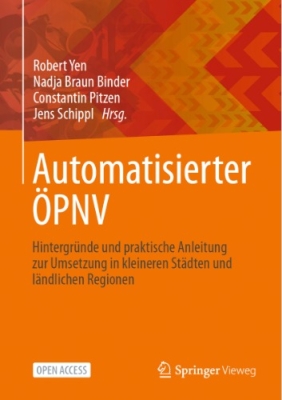Rapp was commissioned together with AIT to identify potential use cases for the use of eCall data in traffic management and to investigate whether and in what way these use cases can be implemented technically, functionally and organisationally.
The EU-wide regulation on the standard implementation of the eCall function in all new vehicles (EU vehicle classes M1 and N1 with a type approval after March 2018) enables the rapid detection of emergencies in vehicles throughout the road network. In addition to the automatically initiated telephone connection, a so-called minimum data set is sent to the nearest rescue control centre, which contains information on the position of the vehicle and other vehicle data. This data opens up additional traffic information for traffic management on motorways, for example for better detection of accident-related incidents or more targeted traffic control to avoid traffic jams.
Up to now, only theoretical considerations were known about possible traffic-related applications of eCall data and the resulting potential benefits. A concrete design of use cases as well as correspondingly required organisational and technical framework conditions were hardly available at present. Therefore, it was analysed how potential benefits could be developed in a technical, functional and organisational way and what the possible application areas for traffic management on motorways could be.
Together with the Austrian Institute of Technology (AIT), Vienna, we examined the basic technical, functional and organisational feasibility of using eCall data in traffic management, identified various use cases and application areas and derived the resulting need for action for a pilot application. On the basis of concrete insights into the reporting system of the rescue and emergency control centres, a description of the entire process chain was made - from the occurrence of an accident report to the evacuation of the accident site. In parallel, we conducted interviews with responsible persons in the traffic control centres of the federal states of North Rhine-Westphalia, Hesse and Lower Saxony in Germany, as well as in Switzerland and Austria, in order to gain an up-to-date insight into the practice of traffic management and to collect previous experiences with eCall data, their potential benefits and implementation obstacles for integration. From the insights gained, we were able to outline a total of five different application scenarios in traffic management that indicate a high potential benefit of eCall data.
- Direct warning for following traffic
- Preparation/activation of measures on the affected route
- Preparation/activation of measures to influence the network
- Assessment of risks & development of proactive measures (offline analyses)
- Planning tasks in traffic management (offline analyses)
For each scenario, solutions for the integration of eCall data in the traffic centres were then described and a qualitative feasibility analysis was carried out. As there is currently no standardised procedure for the transmission of eCall data, the technical and organisational requirements were derived within a realisation concept. The aim was to implement an integration of eCall data in the traffic centres on the basis of standardised procedures and to define the necessary process steps and the required interfaces between the most important organisational units. The main focus of this project stage was to link the tasks of rescue services and traffic management, which are currently statutorily separated, in a technical and organisational way.
The research carried out has shown how the use of eCall data in traffic management is technically and organisationally possible. It was also shown that early knowledge of an accident can be of great benefit in terms of road safety and traffic flow. In order to ensure harmonised and standardised data processing and distribution from a technical point of view, the Mobility Data Marketplace (MDM) should be used as a central data exchange platform and corresponding interfaces to the emergency call centres should be created. In addition, it must be ensured that the eCall data are automatically converted into a format that can be read by transport authorities (e.g. DATEX II or CONTAINER format) before being forwarded. From an organisational point of view, the main driving force for an implementation is the fundamental political willingness to advance the linking of statutorily separated tasks (emergency services and transport). In order to pave the way for implementation, a common understanding between the relevant federal ministries must be created, also taking into account future technical developments and organisational changes in responsibilities.
Contact us
Erik Schaarschmidt
erik.schaarschmidt@rapp-trans.de
+49 30 2844 9327
Robert Yen
robert.yen@rapp-trans.de
+49 173 20 02 609
Key data
Client: Federal Road Agency
Period: 2018 - 2019
Partner: AIT Austrian Institute of Technology







